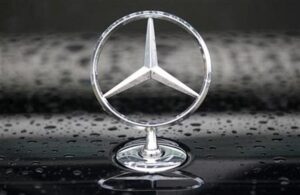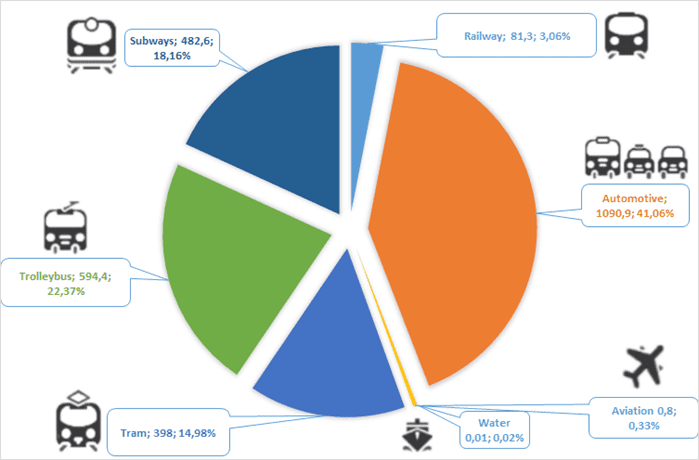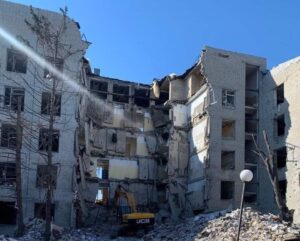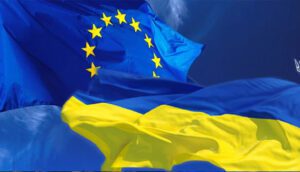
German automaker Mercedes-Benz Group AG aims to at least halve its carbon footprint per passenger car produced by 2030 compared to 2020 levels.
According to the company’s press release, to achieve this goal, it intends to increase the share of electric vehicles in the line of produced cars, use “green” charging technologies, work on improving battery technologies, and also actively use recycled materials and renewable energy sources in production.
Mercedes-Benz expects to produce exclusively electric vehicles by 2030. The company aims to increase the share of hybrid and electric vehicles to 50% of the total volume of passenger cars produced by 2025.
By 2030, the automaker intends to cover more than 70% of its energy needs from renewable sources, in particular through the use of solar panels and wind turbines at its enterprises.
The company has previously said it plans to achieve carbon neutrality in its operations by 2039.
Mercedes-Benz shares lost 1.3% in Frankfurt trading on Monday. Since the beginning of this year, their value has decreased by 8%.
Passengers carried in Jan-August of 2021, in mln


The construction of the innovation park LvivTech.City with co-working will continue, said the founder of the UFuture holding Vasily Khmelnitsky.
“They decided to complete the construction despite the war for two reasons. Firstly, to give employees the opportunity to earn money for their families. Every job saved today is support for the Ukrainian economy and Ukrainians on their native land. Secondly, we are creating a large coworking space right now, so that our IT specialists can stay and work in Ukraine,” the entrepreneur wrote on Facebook.
As reported, UFuture planned to launch the first stage of the LvivTech.City innovation park with an area of 18 thousand square meters. m in September 2021.
LvivTech.City will be located on the territory of the industrial zone of the former Lvovpribor plant. It is planned that the total area of the office part will be more than 40 thousand square meters. m. The park will be equipped with parking lots, a green area and areas for recreation. In addition, the project will be implemented in accordance with LEED green building standards.
According to the project, the area of the park is 5 hectares, the planned area of the residential part is 110 thousand square meters. m.
Completion of the first stage of construction of the LvivTech.City innovation park was previously planned for the second half of 2018, later it was postponed to the end of 2019.
UFuture is a holding company that brings together Khmelnytsky’s business and social projects. He has a diversified portfolio of assets in real estate, infrastructure, industry, renewable energy, pharmaceuticals and IT. The value of UFuture’s assets is estimated at $500 million. The total capitalization of the businesses in which it has invested is up to $1 billion.

Since the beginning of the war, the number of gas stations in Ukraine has decreased three times, and private fuel consumption has decreased by about the same amount, said Sergey Kuyun, director of the A-95 consulting group.
“According to our estimates, a third of the total number of gas stations is operating, this is about 2.5 thousand stations, before the war there were 7.5 thousand. Of course, the main reason is the lack of fuel. Consumption has also decreased three times compared to the pre-war level,” he said at a closed briefing at the Media Center in Lviv on Monday.
At the same time, Kuyun noted that traders or network owners are forced to provide their most strategic and powerful facilities, located mainly in regional centers or on main routes, while peripheral stations are forced to stand idle, although there are also a lot of consumers there.
According to him, the shortage of fuel became especially aggravated after the shutdown of the Kremenchug Oil Refinery as a result of a missile attack by Russian invaders.
“Many companies, especially in central, eastern and southern Ukraine, have lost their main source of supply for themselves. The only way out for them is to independently import through the western border. This is mainly about the fact that small regional companies go abroad with fuel trucks and bring fuel,” he explained.
At the same time, the state’s restriction of fuel prices and the high cost of delivery does not allow to activate this type of supply, the expert believes.
“This supply is very long, only 800 km can be traveled to the border. And the cost of this fuel is higher than the prices set by the government. Accordingly, they do not have any economy or at least a break-even level, and, accordingly, there is no motivation,” he said. director of “A-95”.
In his opinion, the way out of the situation could be a temporary waiver of state regulation, so that as many companies as possible could leave and bring fuel from abroad. However, there are no signals yet that the government is ready to take such steps, he noted.
“There are certain debates going on, let’s hope that we will wait for the right and necessary decisions,” Kuyun said, adding that the government is worried about prices in this case.
At the same time, he called responsible the decision to significantly reduce taxes on fuel, although already insufficient. “In fact, it abolished these taxes altogether, a very necessary step, but then we had a working Kremenchuk Oil Refinery. Now the situation has changed and requires new steps to fill the market. There can be no simple solutions in this situation,” the expert expressed his conviction.
As reported, in March, the Verkhovna Rada, at the initiative of the government, zeroed out the excise tax on fuel and lowered the VAT rate to 7% from 20%.
According to the government’s decision, the price of “premium fuel” cannot be more than 5% higher than the price of conventional fuel. As of the end of March, taking into account the marginal trade margins, the maximum price for “regular” gasoline for sale through a network of filling stations should not exceed UAH 33.53/liter, for “regular” diesel fuel – UAH 37.43/liter.
On April 2, the Russian invaders destroyed the infrastructure of the Kremenchug oil refinery with their shelling, and it stopped working.

As of April 11, 2022, the KSE Institute estimated damage to Ukraine’s infrastructure from the war in the country at $80.4 billion, or UAH 2.4 trillion, while over the past week, the estimate of losses increased by $12.2 billion, according to a press release. analytical division of the Kiev School of Economics (KSE) KSE Institute.
“Over the past week, direct losses to the Ukrainian economy due to destruction and damage to civilian and military infrastructure, documented in public sources, have increased by $12.2 billion. As of April 11, the total amount of direct documented damage to infrastructure, based on public sources alone, has already reached $80.4 billion, or UAH 2.4 trillion,” the KSE Institute said, referring to data analysis within the framework of the Russia will pay project.
Most of all, the growth in the cost of infrastructure damage increased over the past week due to the destruction of residential real estate, including due to clarifications of previous destructions, analysts said. Also, the assessment of the damage caused by the loss of assets of enterprises has also increased.
In general, according to the general estimates of the Ministry of Economy and KSE, the losses of the economy due to the war, taking into account the direct losses calculated in this project, as well as indirect losses, such as a decrease in GDP, a halt in investment and an outflow of labor, range from $564 billion to $600 billion .
According to the release, during the 47 days of Russian aggression in Ukraine, at least 23,000 km of roads, 37,000 sq. m of housing stock, 319 kindergartens, 546 educational institutions, 205 medical institutions, 145 factories and enterprises. In addition, at least 54 administrative buildings, 277 bridges and bridge crossings, 10 military airfields, eight airports and two ports were damaged during the war. Also as of April 8, at least 74 religious buildings and 62 other cultural buildings have been damaged, destroyed or seized.
As reported, the Office of the President, the Ministry of Economics and the analytical center at the Kiev School of Economics KSE Institute launched the project “Russia will pay” – a portal to collect information about the destroyed objects in the country as a result of Russia’s full-scale war against Ukraine.
On a special website https://damaged.in.ua/ you can provide information about the damage caused as a result of the war against Ukraine. In the future, this information will be used by the Ukrainian government as evidence in international courts to compensate Russia for the damage caused.

Representatives of the European Union met with representatives of the Cabinet of Ministers of Ukraine in Kyiv to discuss the application for EU accession, Head of the EU Delegation to Ukraine Matti Maasikas said.
“The best possible start to my first official working day back in Kyiv. Meeting with Deputy Prime Minister for European and Euro-Atlantic Integration Olha Stefanishyna, representatives of the European Commission for Neighborhood and Enlargement, the EU Delegation to Ukraine and the Cabinet of Ministers of Ukraine on the questionnaire, the basis for the EU Commission forthcoming opinion on Ukraine’s EU membership application. Working 24/7 as tasked by Ursula von der Leyen,” he said on Twitter.
As reported, President of the European Commission Ursula von der Leyen handed over to President of Ukraine Volodymyr Zelensky a questionnaire for joining the EU on April 9.